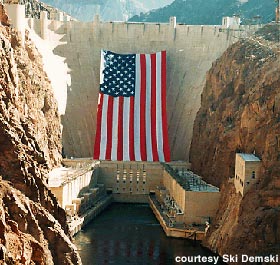Very nice image from what seems like a rough and isolated location. By lift to work, and skiing home... what a job!
Also, the Pic du Midi website has some very nice 3D anaglyphs of the location. Bring out your red/cyan glasses!
I believe you're right. It seems to be aimed at azimuth 120°, i.e. the 4 o'clock position.gscall20 wrote:a little south of East
The image data says it was taken with a 10mm lens on a Canon digital SLR camera. That setup will view an area 107 degrees wide.gscall20 wrote:This is a well done, beautiful shot. However, the caption says "looking south". Based on my limited backyard experience, Orion rises just a little south of East, which I believe to be more a more accurate description of the direction.
Airplanes? There's two similarly toned lights near each other. They may be planes taking off from the same airport. In which case, they must be facing almost exactly at the camera, as there is almost no motion blur.BMAONE23 wrote:What I found interesting is, in the center of the image, just BELOW the horizon (mountain tops), there appears to be a star shining in the distance, in front of the mountains.
In one of the posts above 'orin stepanek' posted a link to this place's Wikipedia article. From that article is the following:GammaJet wrote:Can someone explain a little bit how exactly this small telescope helped the Apollo mission to land in the Moon?.

Depends on the size of the flagGammaJet wrote:Thank you for the reference. So with a bigger device like the Hubble do you think is possible to see a "flag sized object in the moon"?

http://bagn.obs-mip.fr/webcam/Case wrote:I believe you're right. It seems to be aimed at azimuth 120°, i.e. the 4 o'clock position.gscall20 wrote:a little south of East
Not more magnified. That can't be accomplished without a larger mirror due to the nature of optics. The new sensors will be more sensitive, however, allowing fainter or more distant structures to be observed. The 90 times is over the original equipment at the time of launch. Those cameras have already been upgraded at least once since then.BMAONE23 wrote:I do not believe that the Hubble could resolve an image smaller than approx 50' per pixel at that distance. Now after the servicing, if it can truely see 90 times better (deeper/farther/more magnified) who knows???